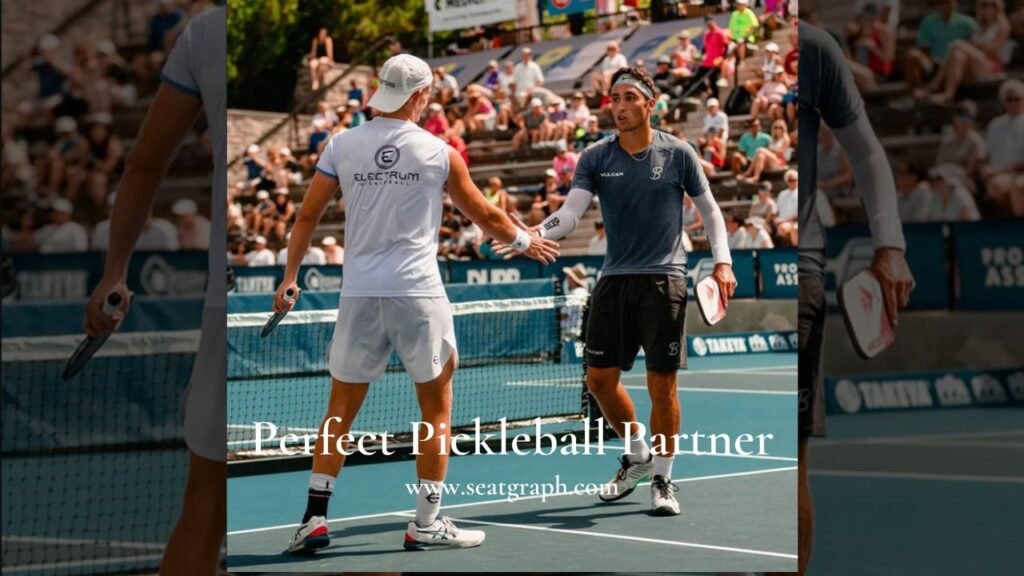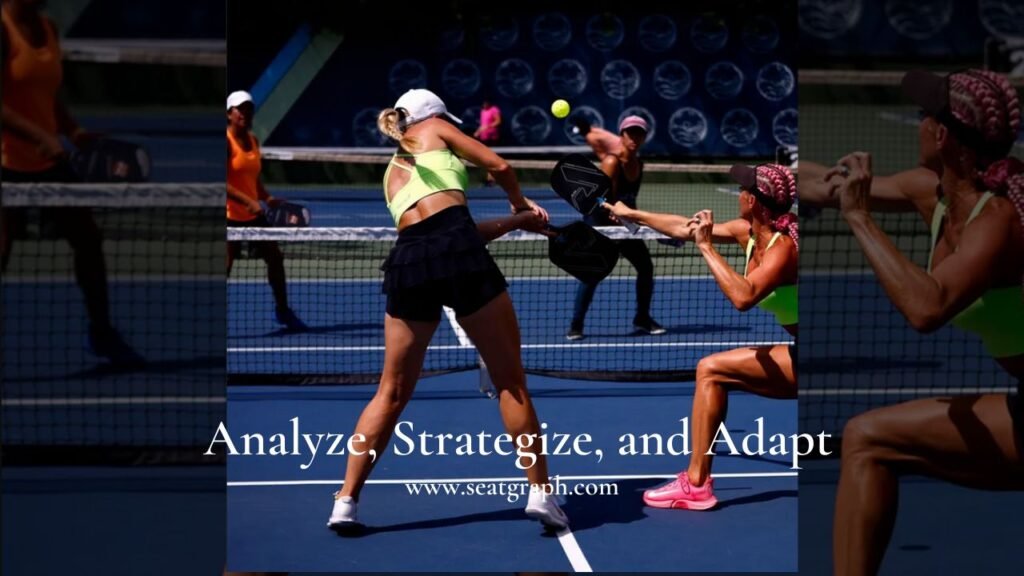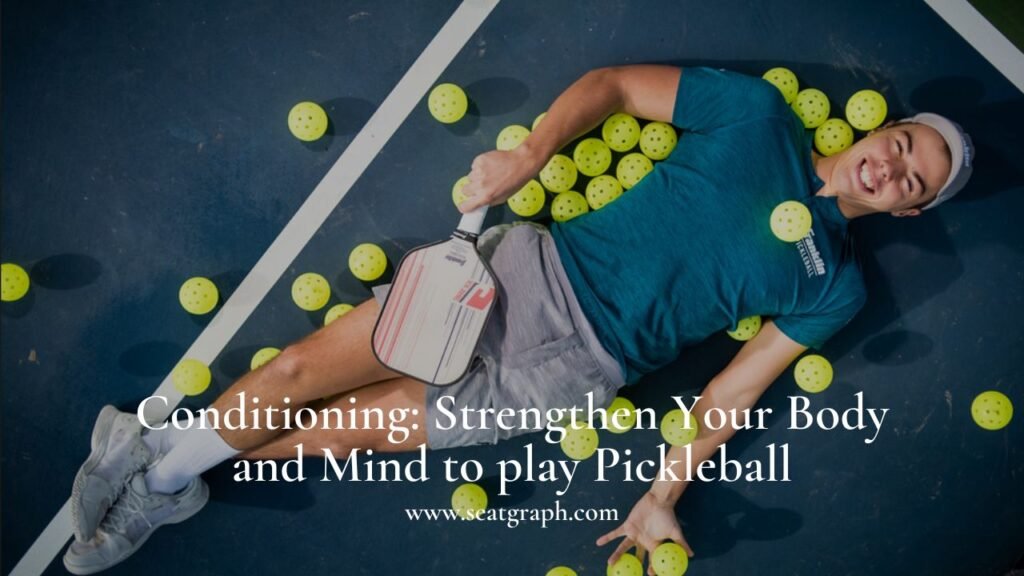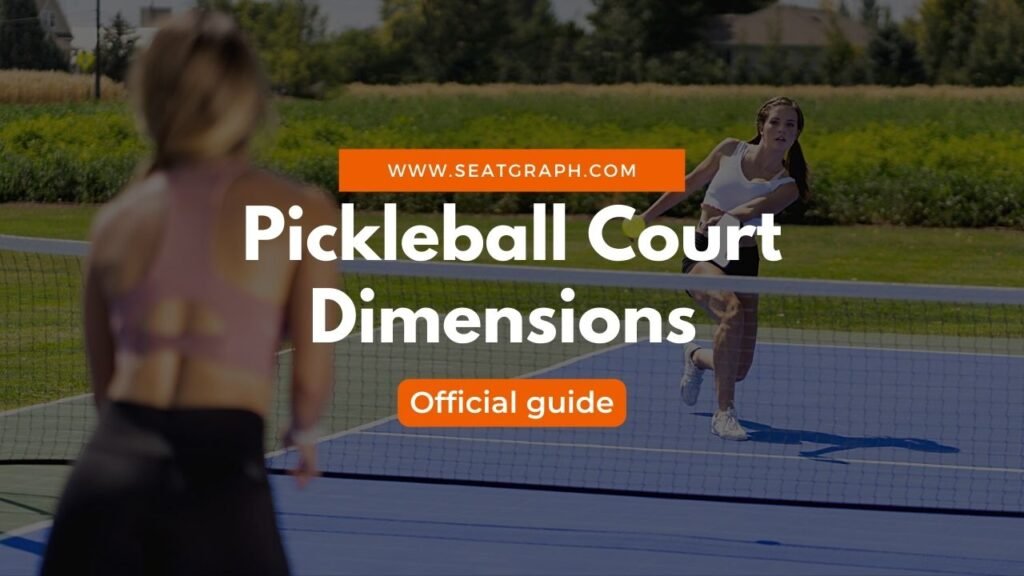Are you ready to elevate your pickleball game and become a pro pickleball player? If you’re passionate about pickleball and dream of making a living from your favorite sport, you’ve come to the right place.
In this comprehensive guide, we will tell you how to become a pro pickleball player in 10 steps and provide you with expert advice and practical tips to turn your aspirations into reality. From mastering the fundamentals to honing your skills, navigating tournaments, and seizing lucrative opportunities, we’ve got you covered every step of the way.
So grab your paddle, lace up your sneakers, and get ready to embark on an exciting journey towards a pickleball career that will make every day feel like a victory. It’s time to smash your way into the pro pickleball league and live the dream!
How to Become a Pro Pickleball Player in 10 Steps?
1 Get Started: Find a Coach or a Pickleball Community Near You
The first step in your journey to becoming a pro pickleball player is to find a coach or a pickleball community near you. Check out local recreation centers, gyms, or community centers that offer pickleball programs. Joining a community will give you access to experienced players, regular practice sessions, and valuable guidance to enhance your skills.

2 Master the Basics: Learn the Pickleball Rules and Techniques
Now that you’ve found a pickleball community, it’s time to master the basics. Start by familiarizing yourself with the rules of the pickleball game. Understand the scoring system, service rules, and how the game progresses.
Once you have a good grasp of the rules, focus on learning the essential techniques, such as the dink shot, volleys, and serves. Practice these fundamental skills consistently to build a strong foundation for your game.
3 Find Your Perfect Pickleball Partner
Pickleball is a game of doubles, and finding a compatible partner is crucial for your success. Look for someone who shares your passion for the sport and complements your playing style.
Playing with a partner who understands your strengths and weaknesses will help you develop effective strategies and improve your overall game. Remember, a great partner can make all the difference!

4 Train with Intensity: Practice Makes Perfect
Becoming a pro pickleball player requires dedication and hard work. Practice regularly and with purpose. Work on your footwork, agility, and hand-eye coordination. Set specific goals for each practice session and focus on improving one aspect of your game at a time.
By training with intensity, you’ll see significant progress and develop the skills needed to compete at a higher level.
5 Analyze, Strategize, and Adapt
Pickleball is not just about physical prowess; it’s also a mental game. Analyze your opponents’ strengths and weaknesses and develop pickleball strategies to exploit them. Learn to adapt your game plan during a match based on your opponents’ playing style.
Remember, being proactive and staying one step ahead will give you a competitive edge.

6 Seek Guidance from Experienced Players
Learning from experienced players is invaluable on your path to becoming a pro. Seek out opportunities to play with and learn from seasoned pickleball players. They can offer insights, tips, and techniques that can significantly impact your game.
Don’t be afraid to ask questions and absorb as much knowledge as you can. The more you learn, the better equipped you’ll be to face challenging opponents.
7 Conditioning: Strengthen Your Body and Mind to play Pickleball
To excel in any sport, including pickleball, you need to have a strong body and mind. Engage in regular physical exercise to build endurance, strength, and flexibility. Incorporate cardiovascular workouts, strength training, and agility exercises into your routine.
Additionally, focus on your mental well-being through meditation, visualization, and positive self-talk. A fit body and a sharp mind will contribute to your success on the pickleball court.

8 Participate in Tournaments: Challenge Yourself
Once you feel confident in your skills, it’s time to put them to the test. Participate in local pickleball tournaments to challenge yourself and gain valuable experience.
Tournaments offer a competitive environment where you can showcase your abilities and measure your progress against other skilled players.
Embrace the opportunity to learn from your wins and losses, as each match will contribute to your growth as a player.
9 Embrace the Growth Mindset: Learn from Setbacks
In your journey to become a pro pickleball player, setbacks are inevitable. You might face tough opponents, experience defeats, or encounter periods of frustration.
Embrace these challenges with a growth mindset. Treat setbacks as opportunities to learn, adapt, and improve.
Analyze your performance, identify areas for growth, and work on them diligently. Remember, every setback brings you one step closer to success.

10 Stay Passionate and Have Fun
Finally, the most important aspect of becoming a pro pickleball player is to stay passionate and have fun. Remember why you started playing pickleball in the first place and keep that joy alive.
Enjoy every moment on the court, embrace the camaraderie of the pickleball community, and celebrate your achievements, big and small. The journey to becoming a pro is as much about the process as it is about the destination.
What Rating is Required to Become a Pro Pickleball Player?
United States of America Pickleball Association (USAPA) uses a skill rating system to categorize players. The rating system ranges from 1.0 (beginner) to 5.0+ (professional-level player). To become a pro pickleball player, you should aim to achieve a 5.0+ rating, indicating mastery of the game and the ability to compete at the highest level.
Keep in mind that the journey to becoming a pro pickleball player requires consistent practice, dedication, and a passion for continuous improvement.
Work on honing your technical skills, understanding the tactical aspects of the game, and strive to achieve higher ratings through competitive play.
With perseverance and hard work, you can elevate your game and reach your goal of becoming a pro pickleball player.
Pickleball Ratings, Player Levels and skills required to achieve those ratings are given below.
| Pickleball Rating | Level | Description |
|---|---|---|
| 1.0 | Beginner | Player is new to Pickleball, learning scoring and rules. Player can hit a number of balls with a forehand. Have a hard time playing games as a rally is not sustainable yet. |
| 1.5 | Beginner | Players keep short rallies going but fail to return balls frequently, and occasionally miss the ball entirely. Have played a few games and knows how to score and knows some of the basic rules of the game. Learning how to serve and be accurate. Developing a forehand. |
| 2.0 | Beginner | Players start to learn to judge where the ball is going and can sustain a short rally with players of equal ability. They have obvious weaknesses in their strokes, but are working on improving them. Able to keep score and are familiar with the court positions for doubles play. Still reluctant to come to the net. |
| 2.5 | Advanced Beginner | Players are able to sustain longer rallies. Many make easier volleys and use the backhand more often but need to work on stroke development. They think more about coming to the Non Volley Zone (NVZ) and start to become more aggressive in their play. Begin to use dinks and lobs, but don’t fully understand when and where they should be used. Serve becomes more reliable. Knowledge of the rules improves. Court coverage may still be week but improves consistently. |
| 3.0 | Intermediate | Players are fairly consistent on the serve and serve return when hitting medium paced shots. Players demonstrate improved skills with all the basic shots strokes and placement, but lack control when trying for direction depth or power on these shots. They are using dinks and lobs on a regular basis as part of their game. |
| 3.5 | Advanced Intermediate | Players have achieved stroke dependability with directional control on most medium paced and some harder hit shots. They still need to develop more depth and variety with their shots but are exhibiting more aggressive net play. They anticipate their opponent’s shots and are developing team work in doubles. They start to use the “third shot drop” and mix play with dinks, soft shots, more pace, angles and lobs. |
| 4.0 | Advanced | Players have dependable strokes, directional control and depth on forehand and backhand strokes. Use lobs, overheads, approach shots, and volleys with success and occasionally force errors when serving. Successful third shot drops, dinks, pace mixture, angles and lobs are now regular parts of their game. They fully understand the rules, and can play by them. They understand the importance of “keeping the ball in play” and the effect of making errors. Rallies may only be lost due to impatience. Teamwork in doubles is evident. |
| 4.5 | Advanced Tournament Level | They have mastered all the skills, shot types, touch, spin, serves and can control the depth of their shots, and handle pace. They have excellent shot anticipation, extremely accurate shot placement and regularly hit winning shots. They force opponents to make errors by keeping the ball in play. Anticipate opponents shots resulting in good court positioning. Mastered shot choices and strategies, varying these and their style of play according to the opponents strengths and weaknesses, and court position. Excellent shot mix, soft, dinks, pace, angles and lobs. All to set up offensive situations. Unforced errors are kept to a minimum to take advantage of opponent’s errors. |
| 5.0 | Champion Level/Pro Level | All the skills have been mastered all shot types, with touch spin serves all controlled to use as weapons. Excellent shot anticipation extremely accurate shot placement and winning shots. Force opponent’s error by keeping the ball in play. Mastered the dink and drop shot. Mastered the 3rd shot choice and also strategies. Use soft shots, dinks and lobs to set up offensive situations. Mastered the strategies and can vary them and their style of play to compete. Dependable in stressful situations as in tournament or match play. Athletic ability, quickness, agility and raw athleticism are also qualities that separate the top players from those near the top. |
How long does it take to become a pro pickleball player?
The time it takes to become a pro pickleball player varies depending on several factors, including your natural talent, dedication to practice, frequency of play, coaching, and competition level.
To become a pro pickleball player, you should aim to achieve a 5.0+ rating from USAPA, indicating mastery of the game and the ability to compete at the highest level.
Some players may achieve professional status within a few years, while others may take longer. Consistent practice, hard work, and a growth mindset are key to accelerating your progress.
Can anyone become a pro pickleball player?
While pickleball is a sport accessible to people of all ages and skill levels, becoming a pro pickleball player requires a high level of skill, dedication, and commitment.
It’s important to set realistic goals, work hard, and seek continuous improvement. With the right mindset, anyone with the passion and drive for the sport has the potential to become a pro pickleball player.
Are there age restrictions to becoming a pro pickleball player?
There are no specific age restrictions to becoming a pro pickleball player. Pickleball offers competitive opportunities for various age categories, including youth, adult, and senior divisions. Regardless of age, it’s never too late to start playing pickleball and pursue your passion for the sport at a professional level.
Should I focus on singles or doubles play to become a pro pickleball player?
Both singles and doubles pickleball play have their own unique aspects, and it’s beneficial to gain experience in both formats.
Starting with doubles play can help develop your teamwork, communication, and court coverage skills.
As you progress, you can explore singles play, which requires greater mobility and shot-making abilities. Ultimately, the choice depends on your personal preference and goals as a player.
Conclusion: Take Your Pickleball Journey to New Heights
Becoming a pro pickleball player requires commitment, perseverance, and a genuine love for the sport. By following these steps and staying dedicated to your training, you’ll be well on your way to mastering the game.
So, grab your paddle, find a partner, and dive into the exhilarating world of pickleball. Remember, the journey may have its ups and downs, but with passion and hard work, you’ll reach new heights and become the pro pickleball player you aspire to be!
Read Article Related to Pickleball:



